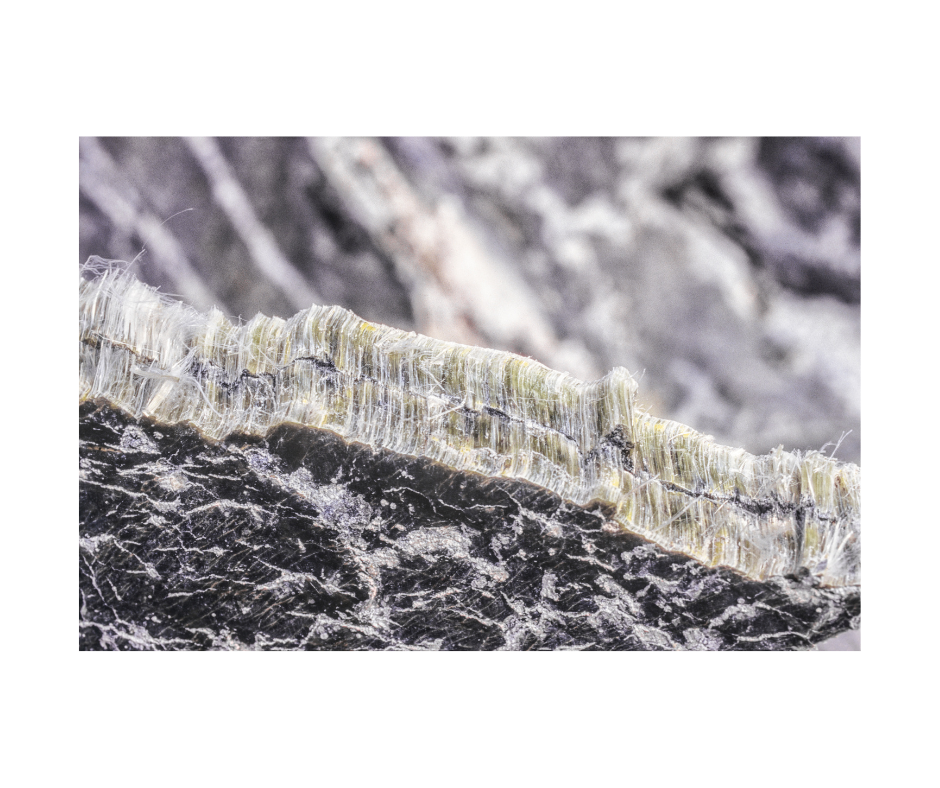Crocidolite Asbestos
Crocidolite is a blue, small type of asbestos fiber. This asbestos fiber is the most hazardous of the asbestos types.
Crocidolite is linked to many cancers and other diseases and more deaths than any other asbestos type. Due to its low heat resistance, crocidolite is less commonly used.

What is Crocidolite Asbestos?
Crocidolite asbestos, often referred to as blue asbestos, is one of the most hazardous forms of asbestos. It belongs to the amphibole asbestos group and is composed of thin, brittle, and microscopic fibers that are highly dangerous when inhaled.
While chrysotile asbestos (white asbestos) is the most commonly used type, crocidolite is considered the most dangerous due to its sharp, needle-like fibers that easily penetrate and lodge in lung tissue, causing severe lung disease and cancer.
Historically mined in South Africa, Australia, and Bolivia, crocidolite was widely used in various asbestos-containing materials, including building materials and insulation products, before its health risks were fully recognized.
Geological Origins and Properties of Crocidolite
Formation and Properties
Crocidolite forms in metamorphic environments, often in iron-rich geological settings. Its fibrous form is a result of metamorphic processes acting on amphibole minerals under specific conditions of heat and pressure.
Crocidolite fibers are highly resistant to heat and chemicals but are also extremely brittle, making them more likely to fracture into respirable fibers.
Unlike the flexible fibers of serpentine asbestos, such as chrysotile, crocidolite fibers do not bend, increasing their ability to pierce tissue.
Historical Uses of Crocidolite Asbestos
Crocidolite was widely used during the 20th century due to its durability, heat resistance, and insulating properties. Its applications include:
- Cement Products: Frequently mixed into asbestos-containing building materials, such as roofing and cement sheets, for added durability.
- Insulation Materials: Used in pipe insulation and thermal insulation for industrial settings.
- Cigarette Filters: Included in automotive brake pads and even experimental cigarette filters, such as the infamous Kent Micronite filters.
- Construction Materials: Found in tiles, sprays, and public buildings, including schools and offices.
Crocidolite’s wide use, particularly in asbestos-containing products, has left a legacy of contamination in commercial asbestos products and structures worldwide.
Health Risks of Crocidolite Asbestos Exposure
Severe Health Hazards
Crocidolite asbestos is considered the most dangerous asbestos due to the brittle and sharp nature of its fibers.
When inhaled, crocidolite fibers embed deeply into the lungs, resisting natural clearance mechanisms and causing long-term damage. Major health concerns include:
- Malignant Mesothelioma: Crocidolite is strongly associated with the development of pleural mesothelioma and other forms of this rare cancer, affecting the lining of the lungs and abdominal cavity.
- Lung Cancer: Prolonged exposure to crocidolite significantly increases the risk of lung cancer, particularly in cases of occupational asbestos exposure.
- Asbestosis: A chronic lung condition caused by scarring of lung tissue due to inhaled asbestos fibers.
- Laryngeal Cancer: Studies, including cohort studies and case-control studies, have linked crocidolite exposure to cancers of the throat and larynx.
Exposure Routes and Risks
Crocidolite exposure commonly occurs through occupational exposure, particularly among workers in mining, construction, and industrial insulation.
Asbestos-containing building materials in homes, schools, and factories also posed risks during renovations or demolition. Fibers released into the air during these activities often lead to inhalation, causing deleterious effects over time.
The European Chemicals Agency and the International Agency for Research on Cancer (IARC) classify crocidolite as a carcinogenic material, emphasizing the severity of its risks.
Comparison to Other Types of Asbestos
Crocidolite is one of the six recognized types of asbestos, including chrysotile (white asbestos), amosite (brown asbestos), tremolite, anthophyllite, and actinolite.
Among these, crocidolite stands out as the most toxic due to its fibrous forms and inability to degrade in the human body.
While chrysotile asbestos has flexible fibers that are easier for the body to expel, crocidolite’s rigid, needle-like structure ensures that it persists in the lungs, causing chronic inflammation.
This property makes crocidolite exposure more likely to result in mesothelioma patients and higher mesothelioma incidence rates compared to other forms.
Regulatory Efforts and Public Safety
Recognizing the health hazards of crocidolite asbestos, regulatory agencies worldwide have implemented strict controls on its use and disposal.
The Environmental Protection Agency (EPA) and the European Chemicals Agency have banned its commercial use and emphasized the importance of bulk material testing and membrane filter methods for detecting asbestos fibers in air samples.
Efforts to address legacy asbestos, including crocidolite, focus on the safe removal and disposal of asbestos-containing materials.
Guidelines from organizations like OSHA outline protective measures for workers handling asbestos-containing products and conducting air sampling to prevent airborne contamination.
Safer Alternatives to Crocidolite Asbestos
To mitigate the risks of crocidolite and other dangerous asbestos forms, industries have transitioned to safer alternatives, including:
- Fiberglass: A versatile material for insulation and construction applications.
- Synthetic Materials: Heat-resistant and non-toxic substitutes for industrial use.
- Cellulose-Based Insulation: A sustainable option for residential and commercial buildings.
These alternatives replicate the functionality of asbestos without the associated health risks.
Protect Your Rights Against Crocidolite Asbestos Exposure
Exposure to crocidolite asbestos can have devastating effects on human health, including lung cancer, mesothelioma, and asbestosis. If you or a loved one has been exposed to crocidolite asbestos and suffered health complications, you may be entitled to compensation.
Occupational asbestos exposure and negligence in handling asbestos-containing building materials can leave property owners, manufacturers, or employers liable for damages.
We specialize in advocating for victims of asbestos exposure, including cases involving crocidolite asbestos.
Our experienced attorneys are dedicated to helping you pursue justice and secure compensation for medical expenses, lost wages, and emotional suffering.
Contact us today for a free consultation to discuss your case and learn how we can assist you in holding responsible parties accountable.
